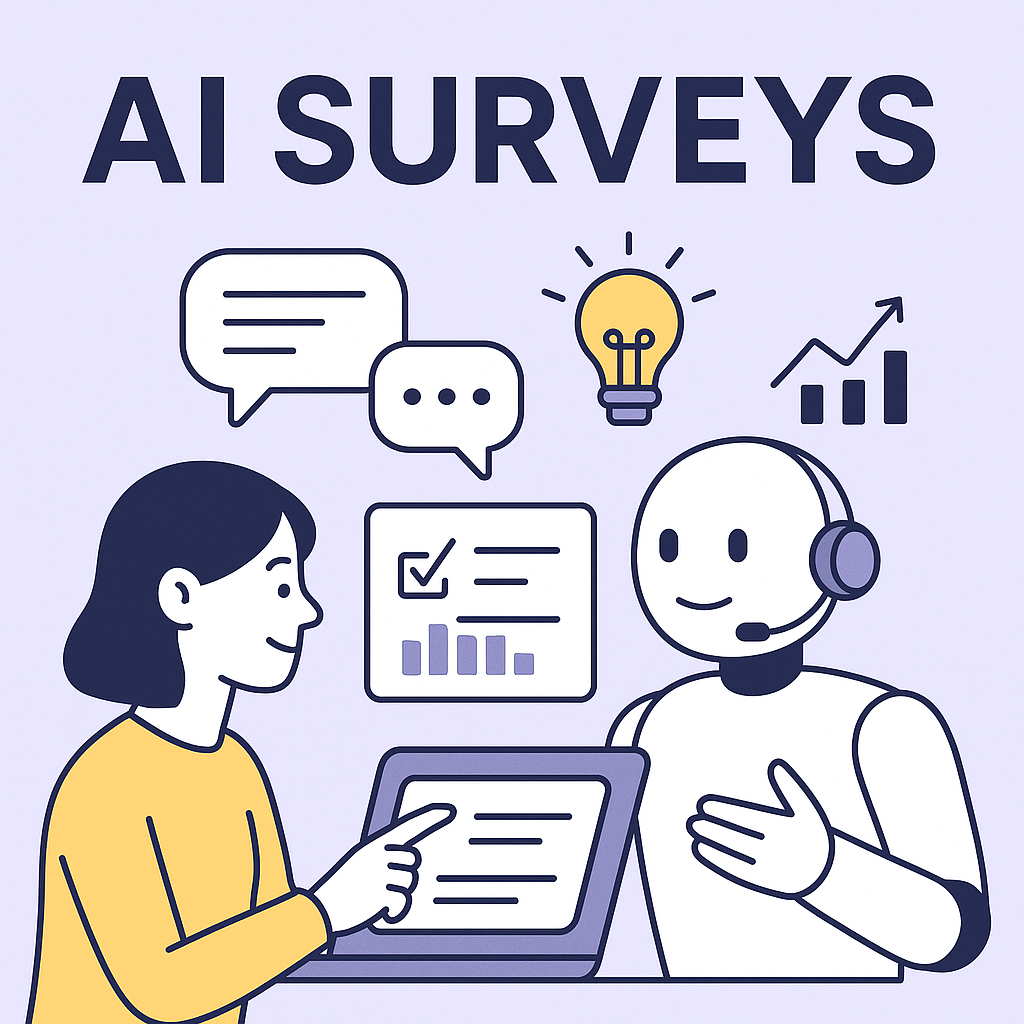
Traditional surveys are dying a quiet death.
Response rates are down. People skip open-ended questions. And most feedback reads like a shrug — “It’s fine.”
Enter AI surveys — a new generation of tools that don’t just collect data but understand it.
Instead of static forms, these tools ask adaptive, human-like questions, analyze sentiment and context in real-time, and even generate reports automatically.
As a researcher who’s spent years watching survey fatigue erode data quality, I can say this: AI surveys aren’t just more efficient. They’re alive. They adapt, learn, and listen.
An AI survey uses artificial intelligence — typically large language models (LLMs) and machine learning — to improve how questions are asked, responses are interpreted, and insights are delivered.
Here’s how they’re changing the game:
Think about the last time you filled out a 10-minute survey. You probably clicked through as fast as possible. AI solves this by making feedback feel conversational.
Let’s break down the major benefits:
AI surveys aren’t just for researchers — they’re becoming the default tool for any team that needs fast, high-quality feedback.
Here’s how different teams are using them today:
Use adaptive surveys post-launch to learn why users churn or struggle with a feature. AI clusters feedback into themes like “usability,” “performance,” or “pricing confusion.”
Run continuous message testing by asking users how they interpret ad copy or brand value props. The AI identifies emotional resonance and keyword patterns from responses.
After support interactions, voice-based AI surveys uncover why customers feel satisfied or frustrated — going beyond NPS scores into emotion and cause.
AI pulse surveys summarize team morale and stress signals from open text, helping managers act before issues escalate.
AI assists in qualitative survey coding, reducing hours of manual thematic tagging and allowing for richer data interpretation.
Here’s a snapshot of the leading players — from legacy feedback tools adding AI layers to AI-native platforms built from the ground up.
What they do brilliantly:
What they’re still learning:
As an example, one research team I worked with used an AI-moderated voice survey for post-purchase interviews. The system identified “delivery anxiety” as a recurring emotional theme that hadn’t shown up in the quantitative data at all — leading the team to redesign their order-tracking flow. That kind of insight wouldn’t have surfaced from a checkbox.
We’re moving from “once-a-quarter surveys” to always-on listening systems.
AI surveys are increasingly embedded directly into customer journeys — after a support chat, inside a checkout flow, or even as short voice check-ins after an interview or meeting.
Soon, you won’t send surveys — your tools will simply listen and interpret conversations happening across channels (support calls, social media, community threads) and convert them into structured insight dashboards.
That’s the holy grail of customer understanding: continuous, contextual, and effortless.
AI surveys aren’t just another automation trend — they’re the bridge between data collection and true understanding.
They turn fragmented feedback into coherent stories that help teams move faster, make smarter decisions, and stay connected to real human experiences.
If you’re still sending static forms and manually coding text responses, it’s time to evolve.
Start experimenting with AI survey tools that let you listen — not just collect.